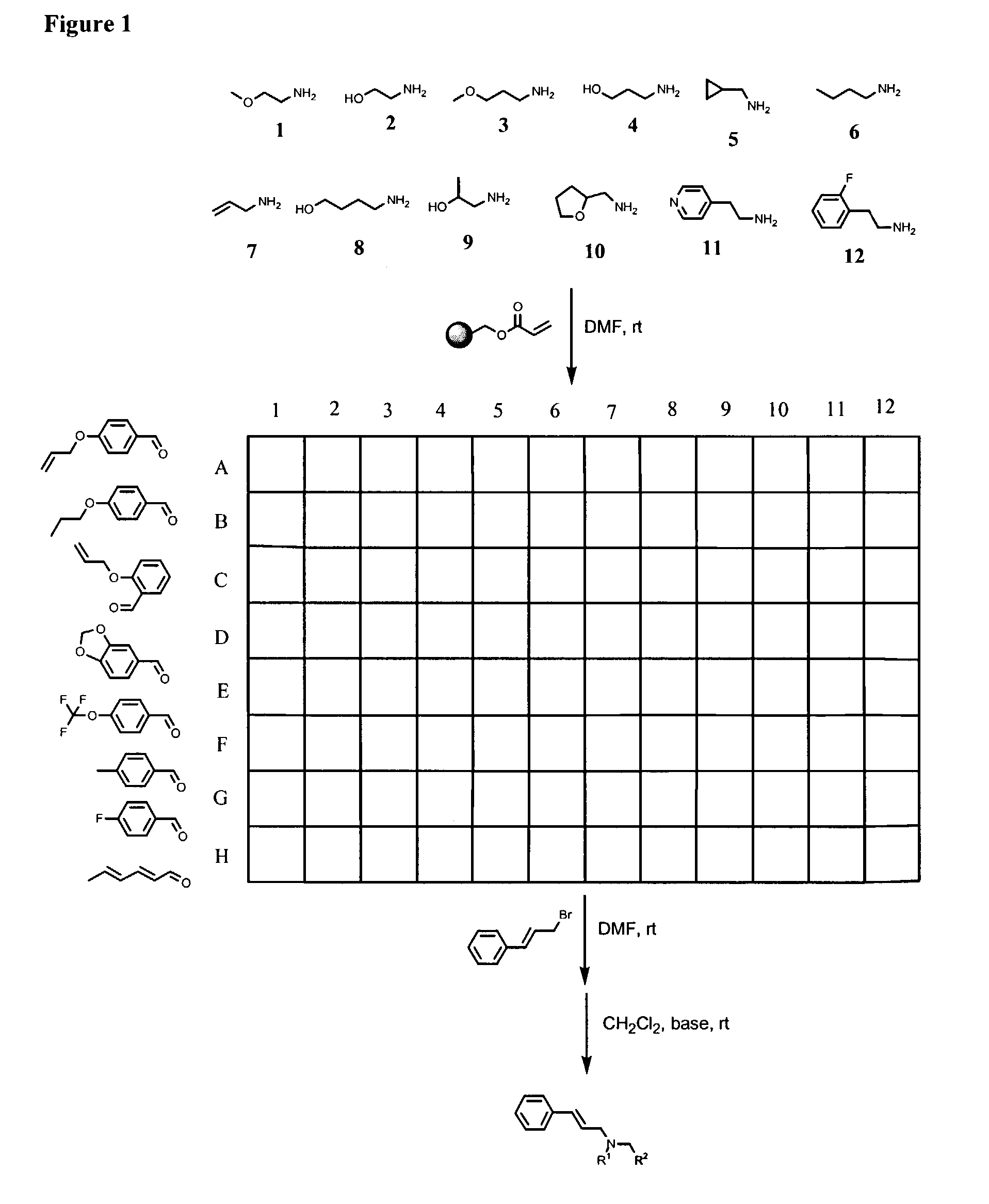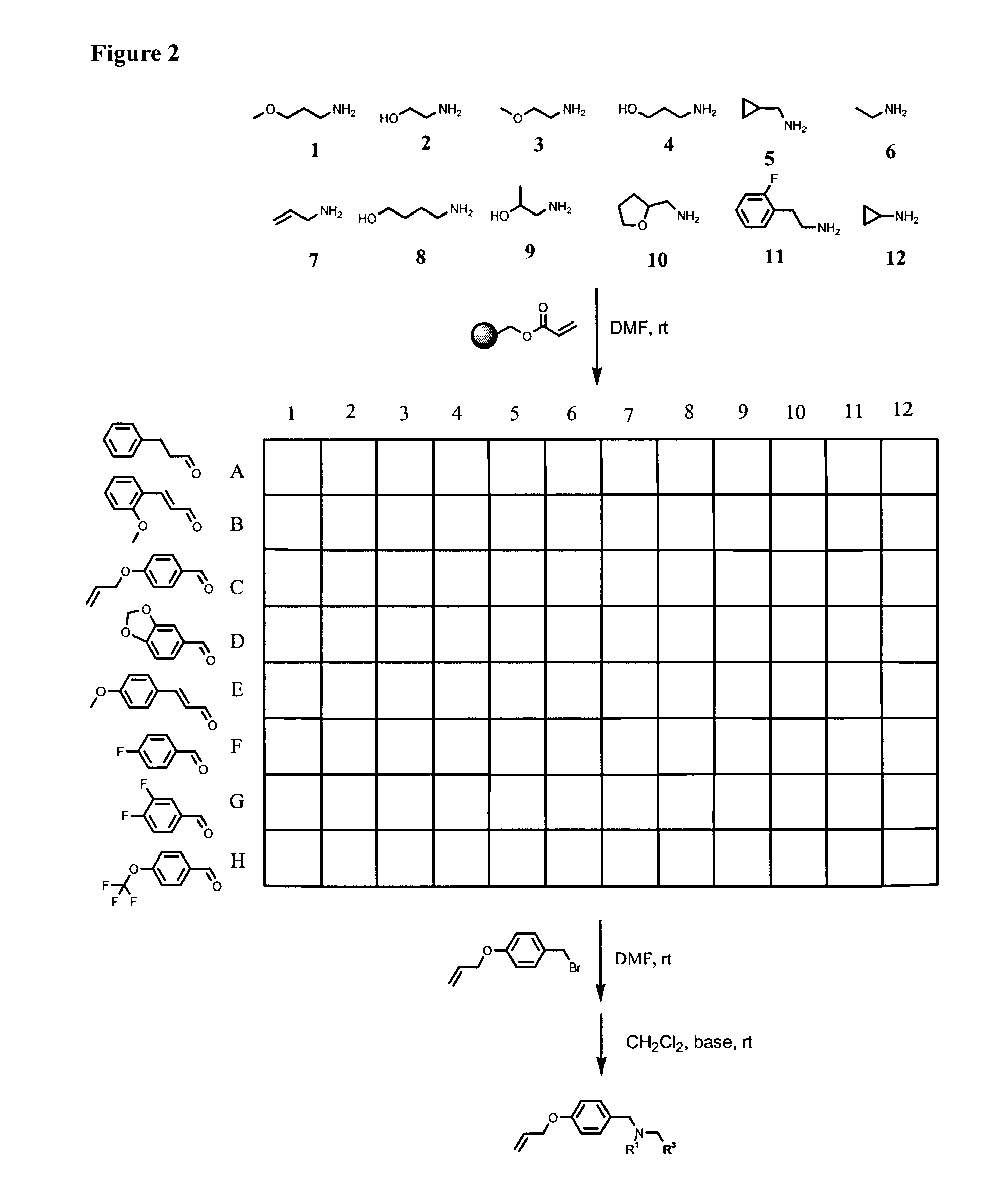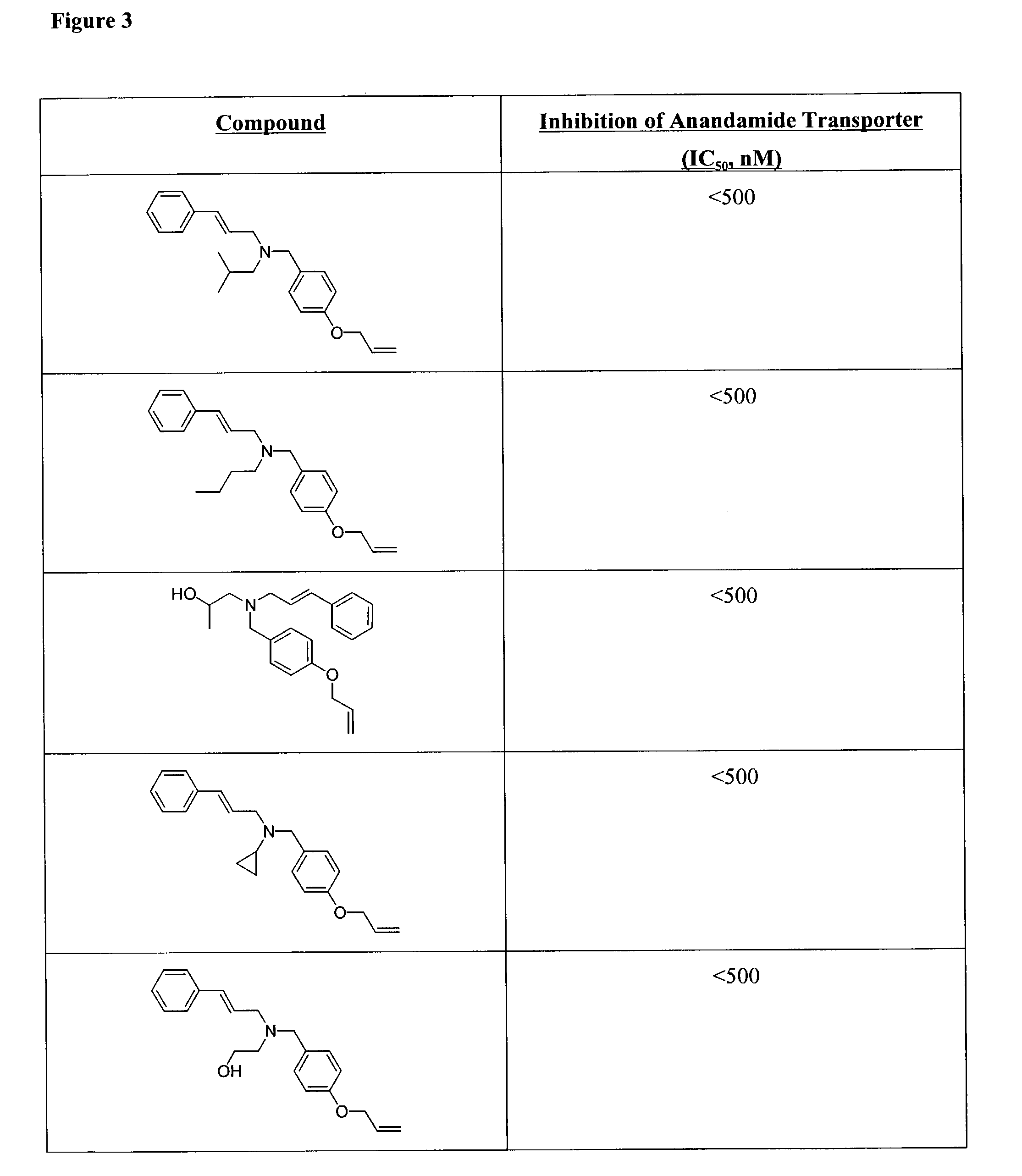Amines that inhibit a mammalian anandamide transporter, and methods of use thereof
a technology of anandamide transporter and amine, which is applied in the field ofamines that inhibit the mammalian anandamide transporter, can solve the problems of low transfer rate of anandamide, unsatisfactory effects, and unsuitability for drug candidacy
- Summary
- Abstract
- Description
- Claims
- Application Information
AI Technical Summary
Problems solved by technology
Method used
Image
Examples
example 1
Solid-Phase Synthesis of N-(4-Allyloxybenzyl)-N-(2-methoxyethyl)-N-(3-phenyl-allyl)amine (4)
[0323]
[0324]To REM resin (0.10 g, 1.06 mmol / g) in a 3 mL polypropylene filtration tube with polyethylene frit was added DMF (1 mL), followed by 2-methoxyethylamine (92 μL, 1.06 mmol). The mixture was shaken at room temperature for 24 hours. The resulting resin (1) was washed with DMF (3×1 mL), MeOH (4×1 mL), and CH2Cl2 (4×1 mL), then dried in vacuo. To the resin (1) was added 4-allyloxybenzaldehyde (153 μL, 1.06 mmol) in DMF (1 mL), and NaCNBH3 (133 mg, 2.12 mmol), followed by acetic acid (10 μL). After shaking at room temperature overnight, the resulting resin (2) was washed with DMF (3×1 mL), MeOH (4×1 mL), and CH2Cl2 (4×1 mL), then dried in vacuo. The dry resin (2) was suspended in a solution of cinnamyl bromide (209 mg, 1.06 mmol) in DMF (1 mL), and agitated at room temperature for 24 hours to give resin (3). Filtration, was followed by rinsing with DMF (3×1 mL), MeOH (4×1 mL), and CH2Cl2...
example 2
Solid-Phase Synthesis of Tertiary Amines 5–12
[0325]Individual compounds 5, 6, 7, 8, 9, 10, 11, and 12 were prepared using the general procedure described in Example 1 for the synthesis of 4. The overall yield of each of these compounds was 35% to 45%, and the purity of each compound was >95%.
[0326]
example 3
Solid-Phase Synthesis of a Combinatorial Library of Anandamide Transporter Inhibitors Comprising a Cinnamyl Moiety (See FIG. 1)
[0327]
[0328]REM resin (1.06 mmol / g) was distributed into twelve 12 mL filtration tubes (0.80 g / tube, 0.848 mmol) followed by dispensing DMF at 8 mL / tube. Twelve amines were respectively added into twelve reaction tubes at 8.48 mmol / tube. After shaking at room temperature for 24 hours, the resulting resins (13) were washed with DMF (3×8 mL), MeOH (4×8 mL), and CH2Cl2 (4×8 mL), the n dried in vacuo. Twelve resins were respectively dispensed into a 96-well reaction block from column 1 to column 12 at 0.10 g (0.106 mmol) / well. Eight aldehydes (A to H) in DMF were respectively dispensed into eight rows, from row A to row H at 1.0 mL / well (containing 1.06 mmol aldehyde), then NaCNBH3 was dispensed into 96 wells at 133 mg / well followed by adding acetic acid at 10 μL / well. After shaking at room temperature overnight, the reaction mixtures were filtered, and the resi...
PUM
| Property | Measurement | Unit |
|---|---|---|
| volume | aaaaa | aaaaa |
| pH | aaaaa | aaaaa |
| cut-off time | aaaaa | aaaaa |
Abstract
Description
Claims
Application Information
 Login to View More
Login to View More - R&D
- Intellectual Property
- Life Sciences
- Materials
- Tech Scout
- Unparalleled Data Quality
- Higher Quality Content
- 60% Fewer Hallucinations
Browse by: Latest US Patents, China's latest patents, Technical Efficacy Thesaurus, Application Domain, Technology Topic, Popular Technical Reports.
© 2025 PatSnap. All rights reserved.Legal|Privacy policy|Modern Slavery Act Transparency Statement|Sitemap|About US| Contact US: help@patsnap.com



